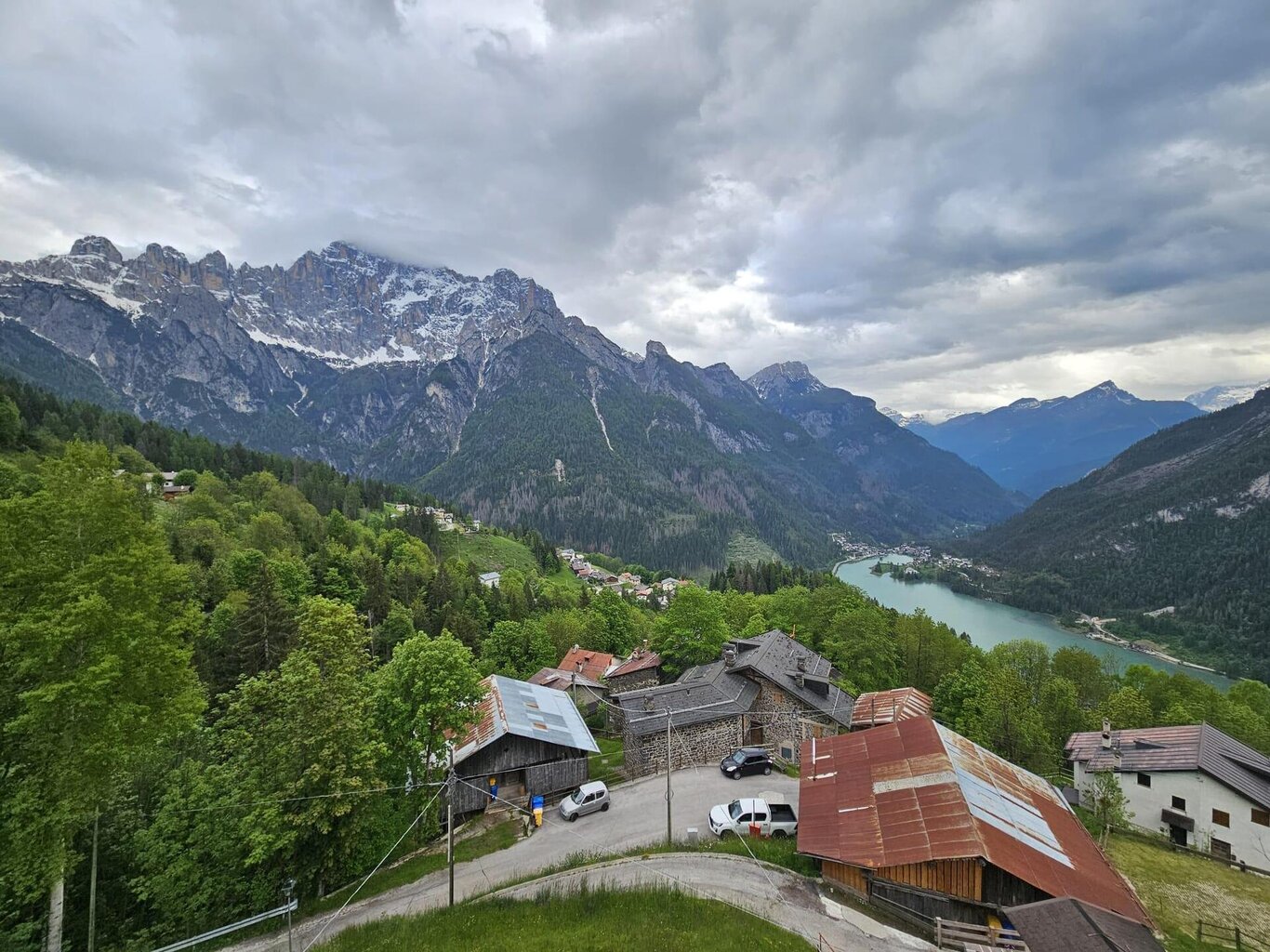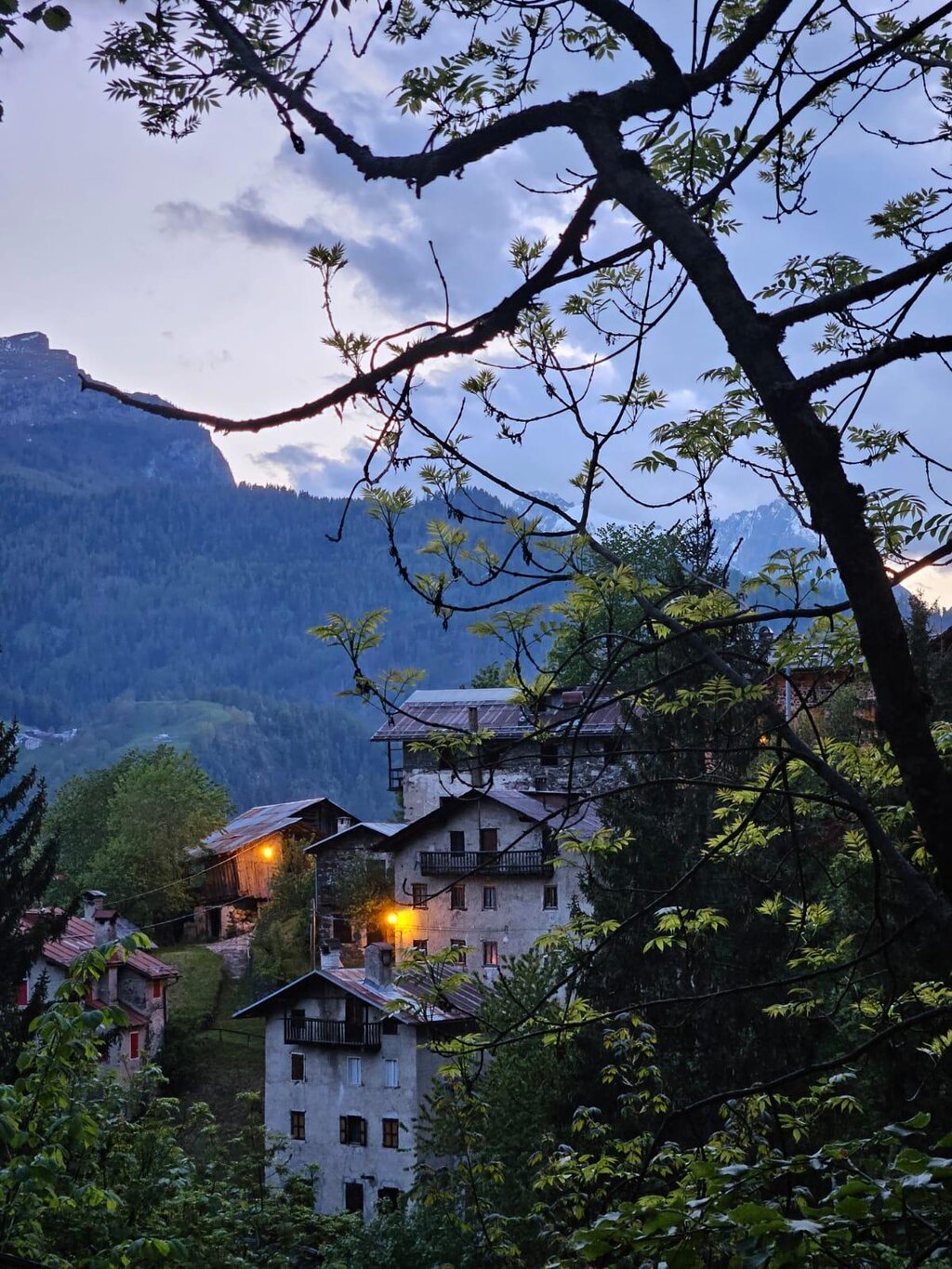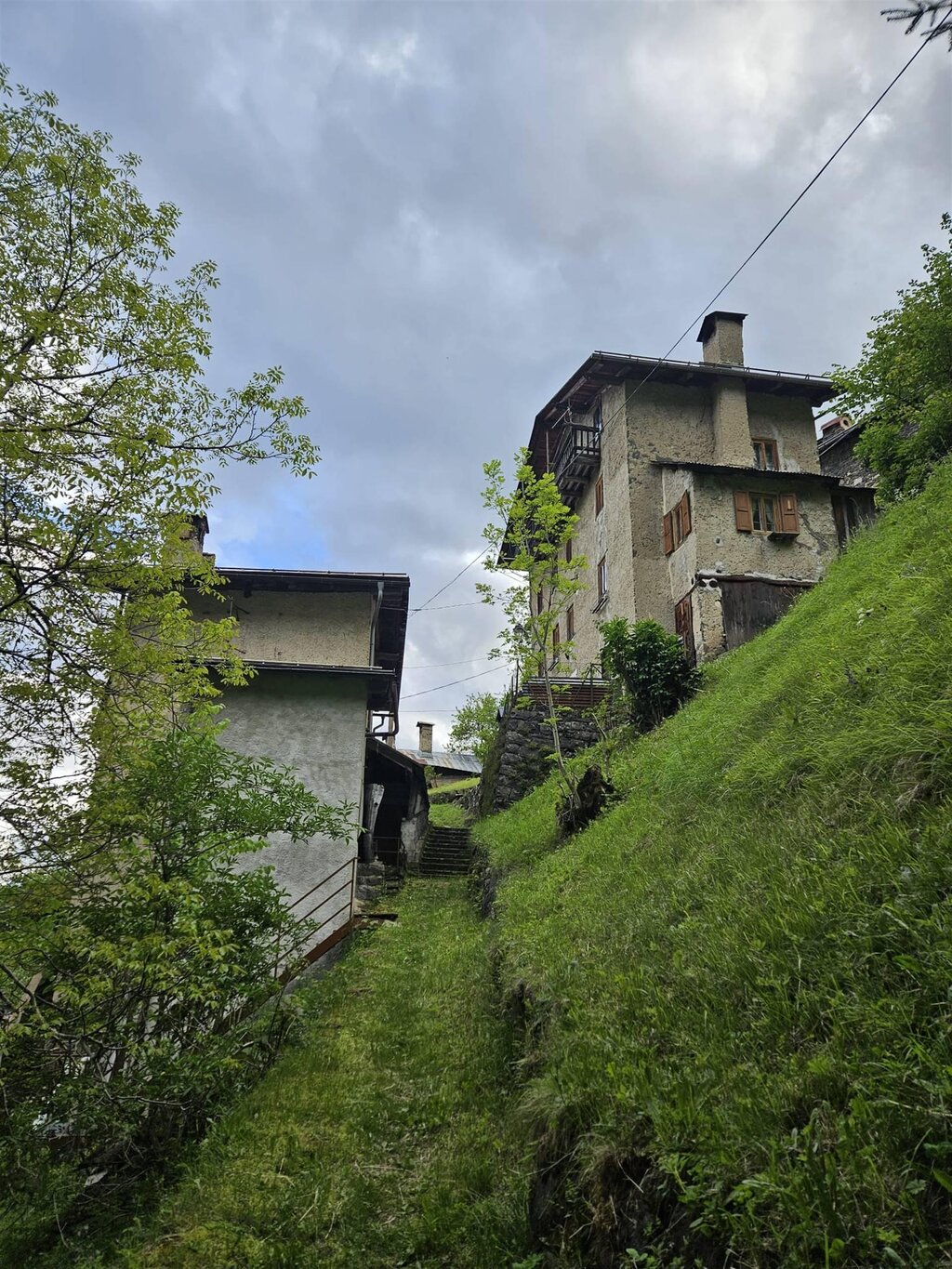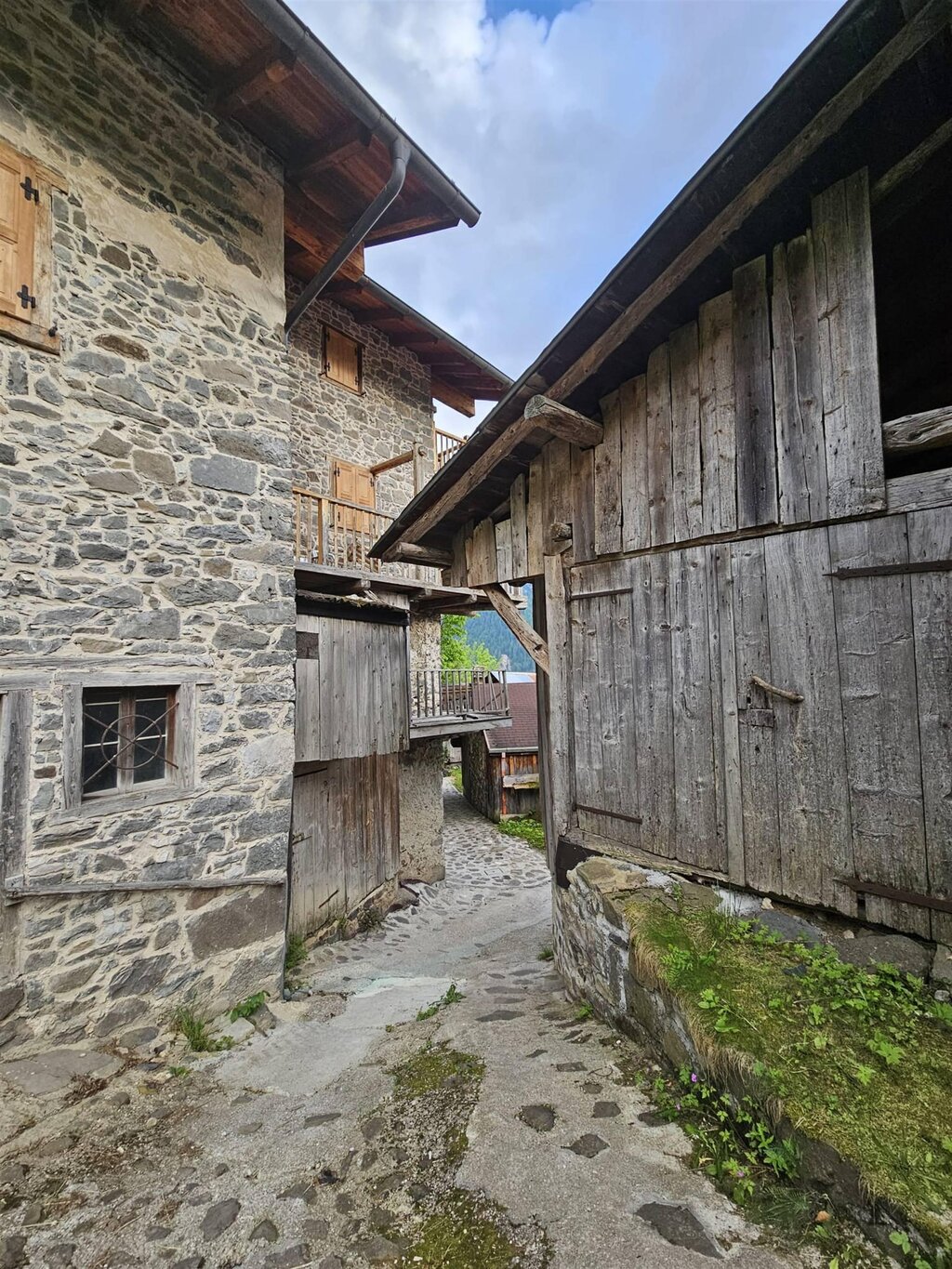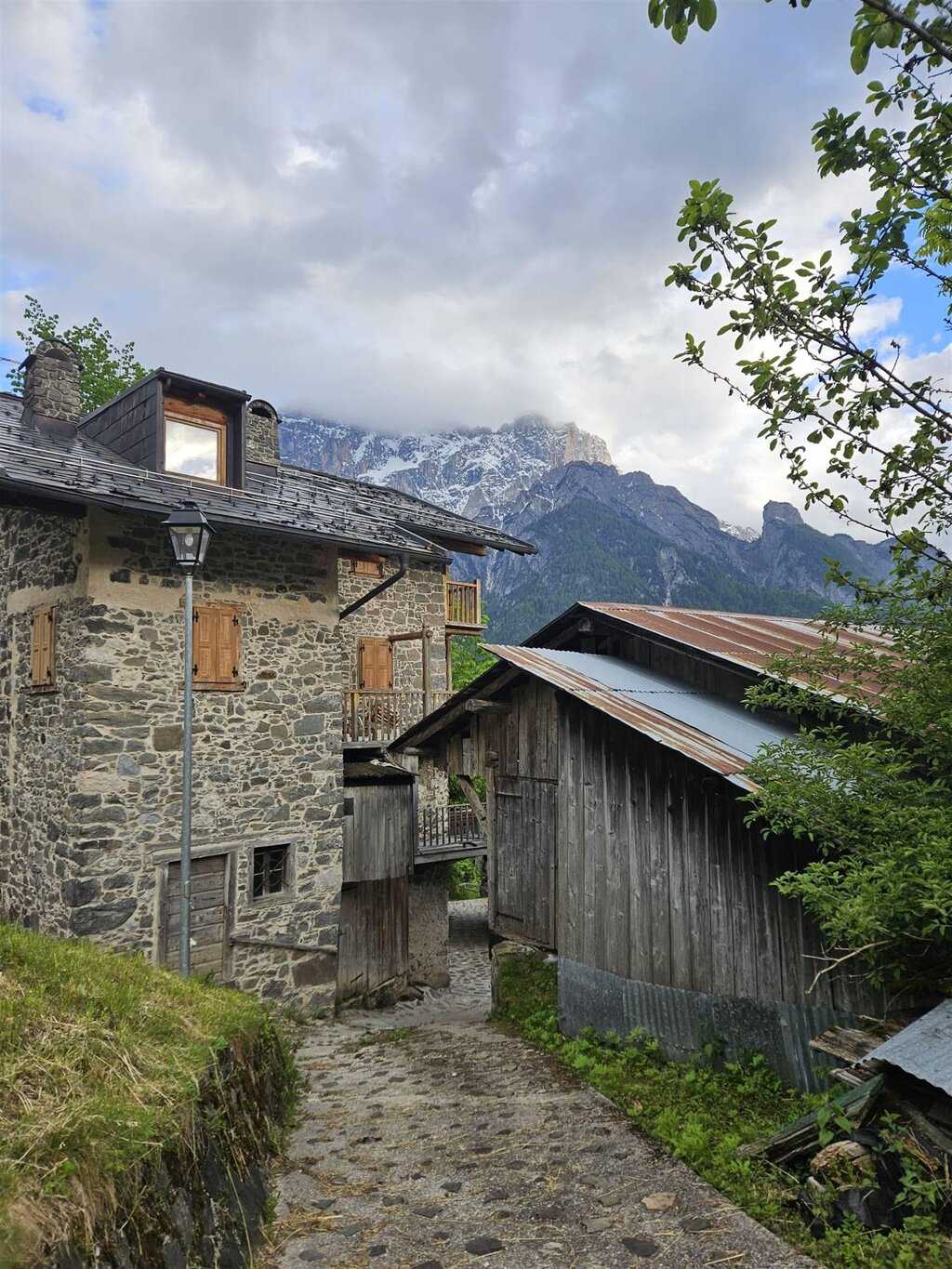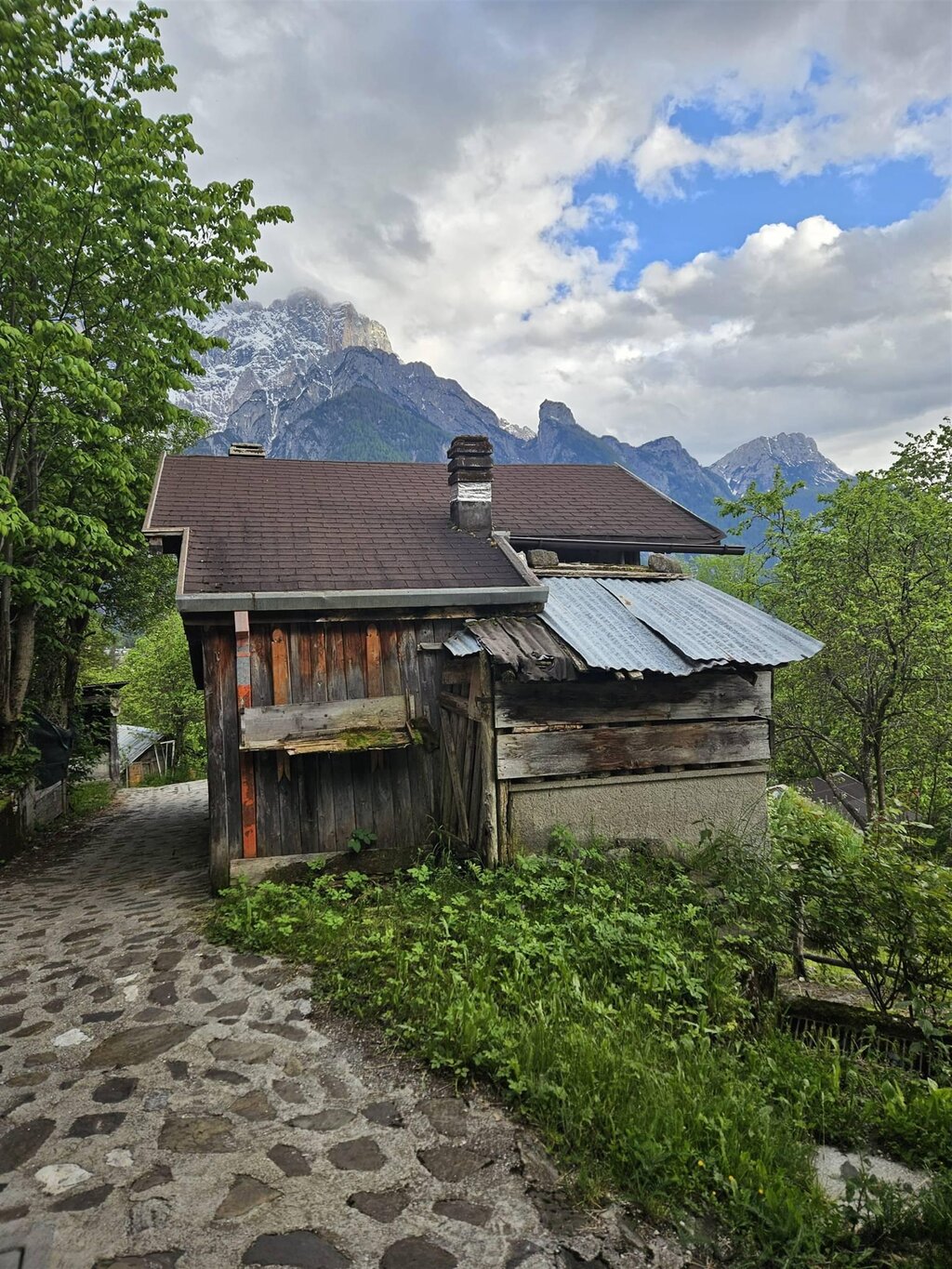Piniè is located at about 1300 meters above sea level on the slope that rises from the left bank of the Cordevole, bordered by the torrents Ru de Pesorcia and Ru de Sopis, up towards the Col de Davagnin.
On the same slope, we successively encounter Dorich, Perencina, and Col de Fontana.
Piniè is therefore the last settlement beyond which there are no more houses. This characteristic seems to be the origin of the name of the village, as the assonance recalls the adverbs “more nothing.” If we check the location of other places with the same name or similar, such as in Cadore or Trentino, we find that they also occupy a terminal position at the end of a slope or valley beyond which no old residential buildings appear.
Piniè, like many other Alpine fractions, consists of a few houses clinging to the steep slope, mostly very close to each other. It is evident that the founders intended to use as little space as possible for building, in favor of areas designated for agriculture and pasture, essential for a subsistence economy.
Such occupations were also accompanied by “family” crafts, both male and female, mainly focused on the construction and maintenance of work tools or daily use items, although Piniè did have its professional craftsman: Menego Menagol, an excellent cobbler experienced in repairing leather and hide products.
In the summer of 1975, a lightning strike caused a devastating fire in Piniè, and it is said that Menego, abandoning his work tools, defended his house from the flames while wielding his crucifix: a sacred image that was a must-have in every “stua.”
The oldest construction in the village is undoubtedly the “casal” dating back to 1647, although before this date there was already a building used for sheltering sheep. This building still exists today, now turned into a vacation home, and was once transformed from a stable into a kitchen. Its owners prepared and consumed their meals there, while for sleeping they would go outside, climb a wooden ladder, walk along a long balcony, and finally enter their bedrooms located in another building: easy in summer, problematic in winter when it was not uncommon to wake up to the unwanted sight of abundant snowfall.
The “casal” could easily be compared to a modern condominium, because in that large decaying structure, at least four families lived together, often sharing the kitchen where two chains hung over the “larin”: a single fire for two pots, two polentas, two different families with many mouths to feed. It was difficult to get along, yet this was life when the house was considered more of a refuge.
Community life took place elsewhere, in the fields and meadows or in the stables where, in winter, people gathered for the “filò,” making use of the warmth emitted by the animals and the people. The community entered the houses only in cases of life or death: for a joyful event or a sad departure. Life and death were constants of those distant times and were both lived with primitive naturalness.
The needs of others were perceived as a duty, and therefore when there was something to be done for public utility, everyone, under the guidance of the democratically chosen village chief, was called to do their part; the same applied to private activities where help was offered, not so much out of solidarity, but more out of habit: a very effective custom even if it caused some disputes. It was indeed normal to argue, even heavily, until it led to accusations and summonses to court for the parties involved.
Usually, the subject of disputes revolved around property issues, perhaps a tree grown at the edge of a boundary capable of causing a ruckus. Then Piniè would come alive: insults would fly, hands would be raised, and sometimes even teeth would be used.
Not by chance, someone had playfully suggested the name “Piazza Cannibali” for the communal square built in ’71. A sound reminiscent of Piazza Kennedy, the main square of Alleghe, but which rather mocked the furious quarrels of the “Cian da Piniei” (dogs of Piniè – the name still used to refer to the inhabitants of this hamlet). Few houses, certainly poor but rich in people, all with the same names, those that were fashionable in the past, those of saints and the Madonna, hence the inevitable use of nicknames.
Every family had one that did not appear in official documents, but which was in fact more important than the surname: it was the only way to distinguish a Nani or a Maria from another Nani or another Maria. And so among those few houses, we still find today, as ancient names of noble families, the Gosaldi, the Menagoi, the Trigoi, the Kaizer, the Siori, the Gin, the Cauč, the Crostoi, the Bagoč, the Cochi, and the Corinti.
Identifications that over the years have migrated elsewhere, but have never completely faded away, even though the historical residents of Piniè are now very few, often replaced by people who came from outside and fell in love with this enchanted place, suspended between a now distant past and a present rich in wild beauty.
